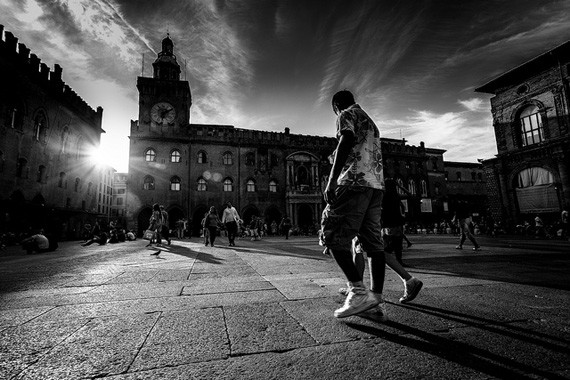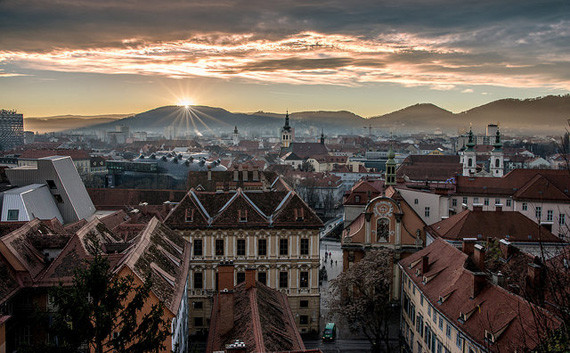Composition doesn’t come naturally to many photographers. The technical aspects can be learned relatively easily but some say that composition can not. Although I don’t believe this to be completely true, photography is an art form and does require some natural ability.

Photo by Frédéric Vissault.
So what can I do? My composition sucks.
Composition is subjective so there will always be someone out there who likes you work regardless of how bad you may think it is. Most non-photographers are not that discerning, but to capture truly great shots composition is key. A well composed photograph just works. It’s pretty clear-cut but it is more a feeling than conforming to a set of rules.
Here are some composition tips to remember next time you go out to shoot. Keep them at hand and see if they work for you.
1. A painter chooses what to include in a painting, a photographer must choose what to exclude. Declutter compositions removing unnecessary components by selective framing. Use your legs, walk about looking for alternative compositions, and use the camera’s zoom to control what you want to include and more importantly, exclude.
2. The ‘rule of thirds’ is a well known compositional practice but doesn’t necessarily need to be strictly adhered to. The rule dictates that the main elements that make up the image should fall on or near imaginary vertical or horizontal thirds.
3. Check your horizon. For me the horizon should only ever be perfectly horizontal. Use the top of the window in the view finder as a reference. I often point the camera downward to align the horizon before re-composing.
4. Don’t leave large empty spaces. Leaving large holes in the composition such as uninteresting expanses of water or dark or very bright elements should be avoided. Change perspective by shortening the tripod legs to compress large gaps in the mid to near foreground. Conversely, elements should not be cluttered; raise the height of the camera to increase the distance between elements.

Photo by Roberto Taddeo.
5. Take a walk before settling on two or three compositions to shoot. Take time to refine them instead of shooting anything and everything.
6. Make both the foreground and background interesting.
7. Use leading lines such as rock formations or movement in water to lead the eye into the frame.
8. Check the edges of the frame for any distracting elements (half a tree, breaks in clouds, etc.), and recompose if necessary. Make sure you’re able to concentrate the viewer’s attention to the subject and try not to distract them from it unnecessarily. Ask yourself, “What is this image about?”
9. Try to keep compositions balanced to some degree, where possible. A protruding headland or building can upset the balance; eliminate it and look for an alternative composition.
10. Critically review your own work and look at how other photographers compose their photos.

Photo by Bernd Thaller; ISO 320, f/8, 1/250 exposure.
Above all, get out there and enjoy! Exploration of composition is a continuous learning curve.
About the Author:
If you’re a fan of photography be sure to head over to Lee’s Landscape Photography for more tips, education offerings and fantastic photography. Lee conducts both capture and post processing photography courses throughout Australia.
Like This Article?
Don't Miss The Next One!
Join over 100,000 photographers of all experience levels who receive our free photography tips and articles to stay current:






Leave a Reply